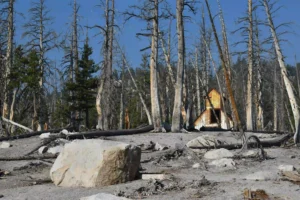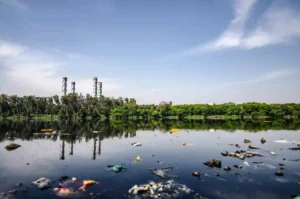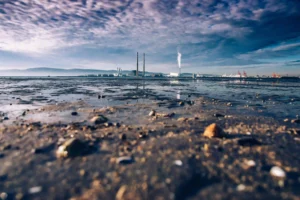Environmental degradation and biodiversity loss are the deterioration of natural environments and the reduction of biological diversity. Degradation is caused by a number of factors such as pollution, habitat loss and climate change.
Biodiversity loss occurs when the number, genetic diversity and variety of species declines in a particular area or planet. It can be a natural process or an accelerated one due to human activities.
Habitat Loss

Habitat loss, which is the alteration of a natural habitat for human use, is one of the primary drivers of biodiversity loss. It is associated with deforestation and invasive species.
The destruction of forests, wetlands, grasslands, and other natural areas has caused a rapid decline in the number of mammal, bird, fish, reptile, and amphibian populations around the world since 1970.
Many of these losses are also driven by climate change, which can affect the growth rate of plants and animals and reduce their ability to adapt to changes in temperatures and precipitation patterns.
Habitat loss also fragments ecosystems, reducing their size and the connections that provide space for species to survive and thrive. This can make it difficult for migratory species to find food and mates along their routes.
Invasive Species
When plants or animals become invasive, they threaten biodiversity and ecosystems. They can also negatively impact human activities such as clogging navigable waterways, weakening flood control structures and damaging crops, or introducing diseases to animals that are raised or harvested commercially.
Invasive species are introduced into new environments where they can compete for resources such as nutrients, light, physical space, water and food. In many cases, they are able to outcompete native species because they have biological properties that make them more suited for their new environment than native plant or animal species.
Invasive species can be spread through a variety of ways, including moving watercraft from one waterbody to another, roadside mowing, importing firewood and moving construction, logging or recreational gear that is not cleaned off mud. For example, purple loosestrife was introduced from Europe to North America more than 200 years ago in bilge water on ships and is now a common weed that threatens natural wetlands all over the world.
Air Pollution

Air pollution is caused by a wide range of sources, including the burning of fossil fuels, such as coal, oil and gas. It can affect human health and the environment.
Air pollution includes the emission of particulate matter and ozone (a key component of smog). Particulate matters are tiny particles that can be breathed in, or deposited on surfaces or in the soil.
Ozone is a harmful gaseous pollutant that forms when volatile organic compounds, such as gasoline and solvents, react with nitrogen dioxide.
Both pollutants contribute to climate change and the destruction of the ozone layer that protects us from harmful ultraviolet radiation. Additionally, both gases cause multiple adverse respiratory effects. They are associated with increases in hospital admissions and emergency department visits for respiratory illness.
Water Pollution

Water pollution occurs when pollutants, such as sewage, chemicals or trash, enter rivers, streams, lakes, ponds, and oceans to the point where they interfere with beneficial use of the water or with the natural functioning of the ecosystem.
The most common sources of water pollution are industrial wastes, agriculture runoff, and stormwater runoff. They can contaminate groundwater, lakes and rivers with toxic chemicals that can harm aquatic life.
These chemicals include pesticides, fungicides, and herbicides. They also contain heavy metals, which are harmful to aquatic life and can harm human health when absorbed into the body.
These chemicals can also change the temperature of freshwater, reducing oxygen levels and making them unsafe for marine life. This happens when companies dump chemical waste into nearby water systems without proper treatment.
FAQs
Q: What is the meaning of biodiversity loss?
Ans: Biodiversity loss refers to the reduction of any aspect of biological diversity (i.e., diversity at the genetic, species and ecosystem levels) in a particular area through death (including extinction), destruction or manual removal; it can refer to many scales, from global extinctions to population extinctions,
Q: What are the main causes of loss of biodiversity?
Ans: Main reasons for biodiversity loss
- Changes in land use (e.g. deforestation, intensive mono-culture, urbanisation)
- Direct exploitation such as hunting and over-fishing.
- Climate change.
- Pollution.
- Invasive alien species.
Q: What is the degradation of biodiversity?
Ans: Biodiversity loss refers to the decline or disappearance of biological diversity, understood as the variety of living things that inhabit the planet, its different levels of biological organisation and their respective genetic variability, as well as the natural patterns present in ecosystems.
